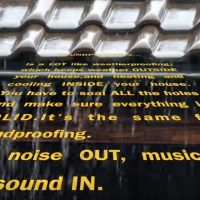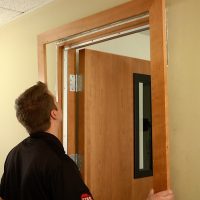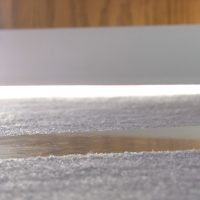What Is Soundproofing?
What Is Soundproofing? Video Transcript
This is music to me, to you, it’s probably noise. Reducing noise, or soundproofing, is a big deal these days. So what is soundproofing?
There are three categories – increasing airborne sound isolation, increasing structural sound isolation, and increasing structural mass. Let’s say that water represents airborne noise.
Most rooms have lots of places where noise will leak in. The door; windows; electrical outlets; air vents; and even ceiling light fixtures. Sound will leak in – and out – any openings in the walls, ceiling, or floor.
Fortunately, there are products that are great at sealing those sound leaks, including door seal kits, acoustic window inserts, and acoustical sealants.
Along with airborne noise, there’s another soundproofing problem – structure-borne noise, which is sound moving through walls, ceilings, and floors.
But – these structures are solid, right? How can sound move through a building? We’ll use a Newton’s Cradle to illustrate how sound energy can move through a seemingly solid wall.
The first ball represents sound in a room, the next three represent a wall made up of sheetrock, framing, then sheetrock, and the last ball represents air in the next room. Watch what happens when I drop the first ball.
It hits the next ball, and sends energy through each ball in line – the middle three don’t move much – then the energy reaches the last ball, and it moves almost as high as the first one. That represents sound energy transferring through solid structures.
To reduce that energy transfer, we can place damping materials, represented by this piece of rubber, between some parts of a building, for example, between the sheetrock and the framing.
With the damping material in place, the last ball doesn’t move nearly as far as it did without it. This is like soundproofing between two rooms by damping parts of the structure in between.
There are products that dampen structural vibrations, like RSIC clips, rubber stud isolators, floor underlayment, and elastomeric sheetrock glue.
Soundproofing also means increasing structural mass. Creating a denser structure makes it more difficult for sound vibrations to move through it.
This Newton’s Cradle is the same, except we’ve changed the middle ball to a larger, heavier one. We’re also using the same rubber damper.
One ball has more mass, so this time, the last ball hardly moves. There’s less energy transfer through a structure with more mass.
To increase the mass of your walls, ceilings, and floors, use double- layered sheetrock, build thicker framing, and use heavier, denser building materials.
Soundproofing means increasing isolation and increasing mass. If you seal air leaks, dampen vibrations between structural parts, and increase the mass of building components, you’ll hear a lot less noise.
Thanks for watching!



 What’s First?
What’s First? Soundproof Door Install
Soundproof Door Install Climate Seal Acoustical Window Inserts
Climate Seal Acoustical Window Inserts Door Seal Kit Install
Door Seal Kit Install